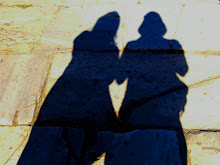
N47°31.120
E019°04.900
Today, our last full day in
First, we headed to the  the horrific events during World War II. We’ve read a lot of literature around the events, but seeing the pictures and listening to audio and video accounts from survivors we fought back tears as the films outlined the devastation.
the horrific events during World War II. We’ve read a lot of literature around the events, but seeing the pictures and listening to audio and video accounts from survivors we fought back tears as the films outlined the devastation.
At one point during World War II, Jews from other European countries sought protection in
However, the Hungarian government was caught playing both sides during the war—they worked with Hitler to regain territory they lost after WWI and then began negotiating with the British and Americans when it became evident that  ghettos though out the country with very little food or provisions to survive.
ghettos though out the country with very little food or provisions to survive.
In May of 1944, the deportations of the Jews began, and, this is the most staggering fact, over 430,000 Jewish people were deported to Auschwitz in a time period of ten weeks! Marc and I were shocked as we read these numbers, shaking our heads in disbelief. In addition,
The Hungarian citizens weren’t limited to only people of Jewish descent. There were people of Romanian descent who fell victim to the atrocities. Most of these people were simply poor, living life as vagrant gypsies roaming throughout the countryside looking for work. Even before the Arrow Cross Party takeover these people were victims of government raids and forced to work as laborers or participate in military events—their freedom and dignity was frequently violated. They too became victims at
 We took our time walking through the museum, shocked by what we were seeing, but at the same time we are aware of the unfortunate history from books, including “Night” by Elie Wiesel, that we read during our trip. When we finally exited the museum and continued our walk through the city we reflected on what we saw. How could we as humans let this happen?
We took our time walking through the museum, shocked by what we were seeing, but at the same time we are aware of the unfortunate history from books, including “Night” by Elie Wiesel, that we read during our trip. When we finally exited the museum and continued our walk through the city we reflected on what we saw. How could we as humans let this happen?
Then, you look at the news today, and you see the tragic events in Darfur. The World is letting genocide happen all over again—haven’t we learned from our mistakes?

No comments:
Post a Comment